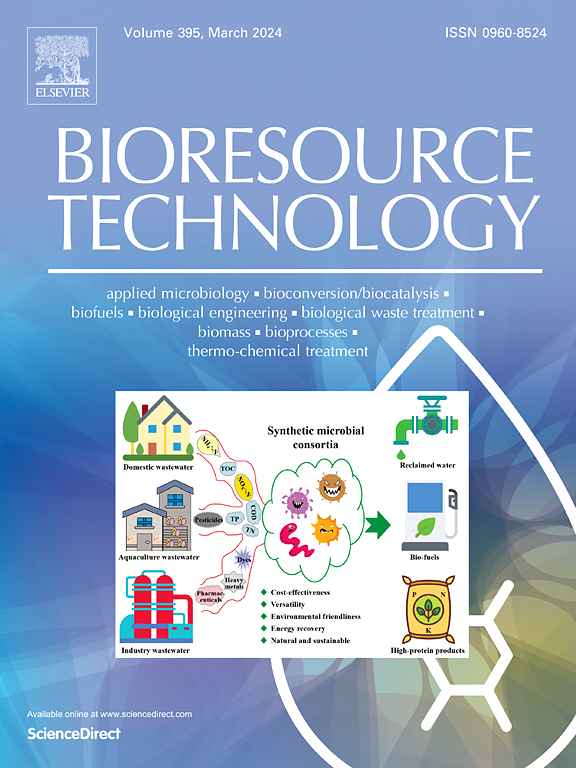微藻蛋白质转化为脂质的综合热和生物转化
IF 9
1区 环境科学与生态学
Q1 AGRICULTURAL ENGINEERING
引用次数: 0
摘要
微藻的组成因培养策略而异,低成本的方法往往能产生高蛋白生物量。这给围绕静态、富含脂质的原料设计的生物精炼厂带来了挑战。特别是,高蛋白藻类的水解产物富含氮而缺乏糖,限制了微生物的转化并降低了产品产量。本研究开发了一种连续热调节和生物升级策略,将高蛋白水解物加工整合到传统的脂质提取和升级设计中。氧化解构被用来将蛋白质分解成铵和短链羧酸盐。随后除去铵盐,得到适于微生物产脂的贫氮富羧酸培养基。油酸皮三磷酸丝素的生物转化试验表明,只有经过氧化解构和脱氮处理的水解产物才能积累脂质,当细胞内含量为30%时,脂质达到1.2 g/L。这种集成的方法可以实现蛋白质到脂质的转化,提高处理可变藻类原料的灵活性,推进燃料导向的微藻生物炼制。本文章由计算机程序翻译,如有差异,请以英文原文为准。

Integrated thermal and biological conversion of microalgal proteins to lipids
Microalgal composition varies with cultivation strategy, and low-cost approaches often produce high-protein biomass. This presents challenges for biorefineries designed around static, lipid-rich feedstocks. In particular, hydrolysates from high-protein algae are nitrogen-rich and sugar-poor, limiting microbial conversion and reducing product yields. This study develops a sequential thermal conditioning and biological upgrading strategy to integrate high-protein hydrolysate processing within conventional lipid extraction and upgrading designs. Oxidative deconstruction was used to break down proteins into ammonium and short-chain carboxylates. Ammonium was subsequently removed to yield a nitrogen-depleted, carboxylate-rich medium suitable for microbial lipid production. Bioconversion trials with Cutaneotrichosporon oleaginosum showed lipid accumulation only from hydrolysates treated with both oxidative deconstruction and nitrogen removal, reaching 1.2 g/L lipids at 30 % intracellular content. This integrated approach enables protein-to-lipid conversion and improves flexibility to process variable algal feedstocks, advancing fuel-oriented microalgal biorefineries.
求助全文
通过发布文献求助,成功后即可免费获取论文全文。
去求助
来源期刊

Bioresource Technology
工程技术-能源与燃料
CiteScore
20.80
自引率
19.30%
发文量
2013
审稿时长
12 days
期刊介绍:
Bioresource Technology publishes original articles, review articles, case studies, and short communications covering the fundamentals, applications, and management of bioresource technology. The journal seeks to advance and disseminate knowledge across various areas related to biomass, biological waste treatment, bioenergy, biotransformations, bioresource systems analysis, and associated conversion or production technologies.
Topics include:
• Biofuels: liquid and gaseous biofuels production, modeling and economics
• Bioprocesses and bioproducts: biocatalysis and fermentations
• Biomass and feedstocks utilization: bioconversion of agro-industrial residues
• Environmental protection: biological waste treatment
• Thermochemical conversion of biomass: combustion, pyrolysis, gasification, catalysis.
 求助内容:
求助内容: 应助结果提醒方式:
应助结果提醒方式:


